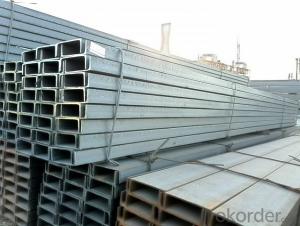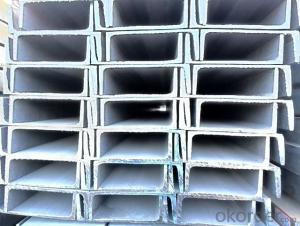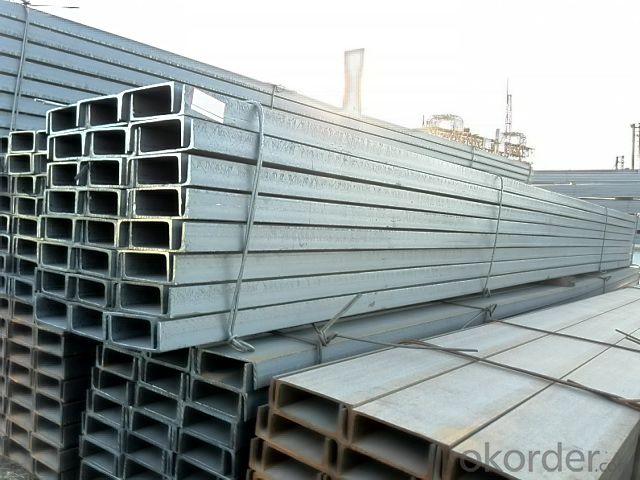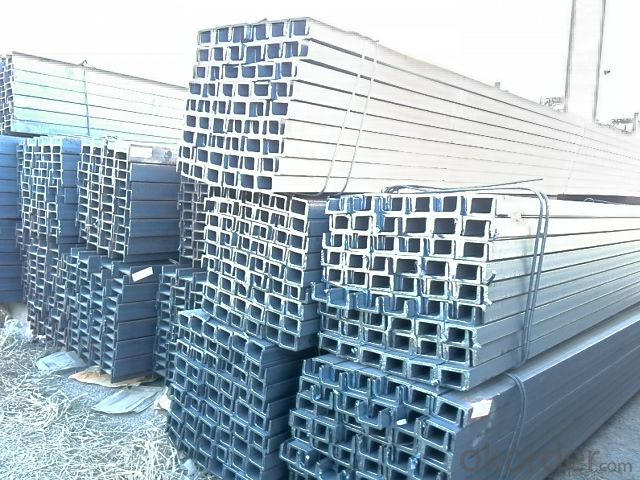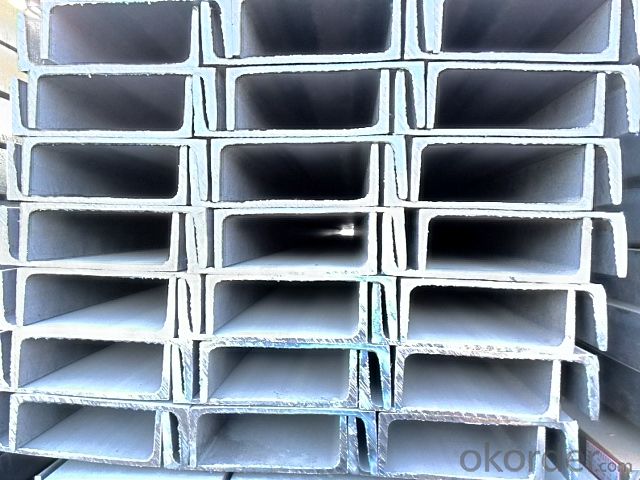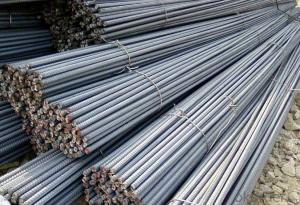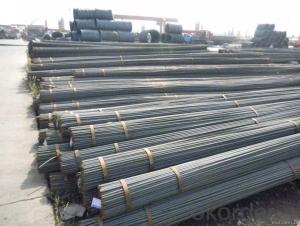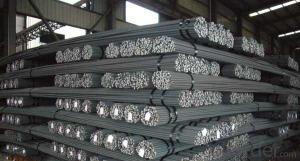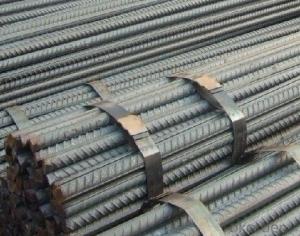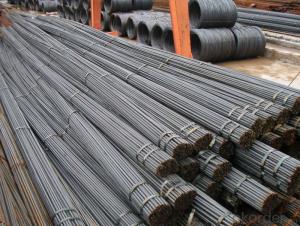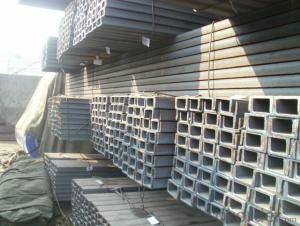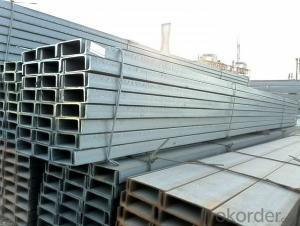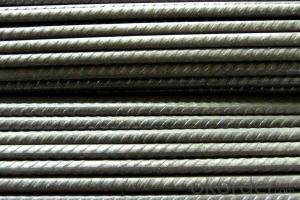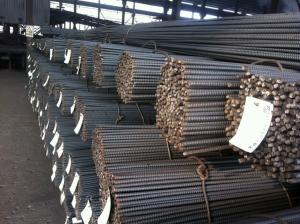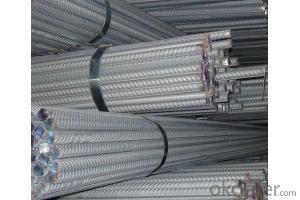U-channels In Japanese Standard with High Quality
- Loading Port:
- Tianjin
- Payment Terms:
- TT OR LC
- Min Order Qty:
- 25 m.t.
- Supply Capability:
- 10000 m.t./month
OKorder Service Pledge
OKorder Financial Service
You Might Also Like
Product Description:
| Minimum Order Quantity: | 25MT | Unit: | m.t. | Loading Port: | Xingang Port |
| Supply Ability: | 120000TON/Year | Payment Terms: | TT or LC |
Product Applications:
Japanese Standard U-channels are ideal for structural applications and are widely used in the construction of buildings and bridges, and the manufacturing, petrochemical, and transportation industries.
Product Advantages:
OKorder's Japanese Standard U-channels are durable, strong, and resist corrosion.
Main Product Features:
· Premium quality
· Prompt delivery & seaworthy packing (30 days after receiving deposit)
· Corrosion resistance
· Can be recycled and reused
· Mill test certification
· Professional Service
· Competitive pricing
Product Specifications:
Manufacture: Hot rolled
Grade: Q195 – 235
Certificates: ISO, SGS, BV, CIQ
Length: 6m – 12m, as per customer request
Packaging: Export packing, nude packing, bundled
1. We are definitely speciallizing in manufacturing and supplying channel steel as per japanese standard, which is characterised with high mechanical strength and competitive prices.
Original Place | Tangshan, China | Brand Name | UINDA |
Standard | JIS G3192 : 1990 | ||
Material Grade | SS490 | ||
Sizes | 50mm to 200mm | ||
Sales Volume/Year | 3000MT | ||
Destination Area | Middle East, Africa, Southeast Asia | ||
2. The sections in details are as followings in the table-1
JIS U CHANNEL | Standard | Sectional | Dimension |
| Mass: |
| (mm) | (mm) | (mm) | (mm) |
|
50x25 | 50 | 25 | 3.0 | 6.00 | 2.37 |
75X40 | 75 | 40 | 3.8 | 7.00 | 5.30 |
75X40 | 75 | 40 | 4.0 | 7.00 | 5.60 |
75X40 | 75 | 40 | 4.5 | 7.00 | 5.85 |
75X40 | 75 | 40 | 5.0 | 7.00 | 6.92 |
|
|
|
|
|
|
100X50 | 100 | 50 | 3.8 | 6.00 | 7.30 |
100X50 | 100 | 50 | 4.2 | 6.00 | 8.03 |
100X50 | 100 | 50 | 4.5 | 7.50 | 8.97 |
100X50 | 100 | 50 | 5.0 | 7.50 | 9.36 |
|
|
|
|
|
|
125X65 | 125 | 65 | 5.2 | 6.80 | 11.66 |
125X65 | 125 | 65 | 5.3 | 6.80 | 12.17 |
125X65 | 125 | 65 | 5.5 | 8.00 | 12.91 |
125X65 | 125 | 65 | 6.0 | 8.00 | 13.40 |
|
|
|
|
|
|
150x75 | 150 | 75 | 5.5 | 7.30 | 14.66 |
150x75 | 150 | 75 | 5.7 | 10.00 | 16.71 |
150x75 | 150 | 75 | 6.0 | 10.00 | 17.90 |
150x75 | 150 | 75 | 6.5 | 10.00 | 18.60 |
150x75 | 150 | 75 | 6.5 | 10.00 | 24.00 |
|
|
|
|
|
|
200X80 | 200 | 80 | 7.5 | 11.00 | 24.60 |
Table-1
3. The mechanical property of JIS U Channel Steel in the table-2:
Grade | Yield Strength,N/mm² | Extension Strength N/mm² | |||
Thickness of Steel,mm | |||||
≦16 | >16-≦40 | >40-≦100 | >100 | ||
SS490 | ≧285 | ≧275 | ≧255 | ≧245 | 490-610 |
Table-2
4. The chemical composition of JIS U Channel Steel as per SS490 in the table-3
Grade | Element(%) | |||
C | Mn | P | S | |
SS490 | - | - | ≦0.050 | ≦0.050 |
Table-3
FAQ:
Q1: Why buy Materials & Equipment from OKorder.com?
A1: All products offered byOKorder.com are carefully selected from China's most reliable manufacturing enterprises. Through its ISO certifications, OKorder.com adheres to the highest standards and a commitment to supply chain safety and customer satisfaction.
Q2: How do we guarantee the quality of our products?
A2: We have established an advanced quality management system which conducts strict quality tests at every step, from raw materials to the final product. At the same time, we provide extensive follow-up service assurances as required.
Q3: The products are invoicing on theoritical weight or on actual weight?
A3: We can do it in both manners, according to the customers' request.
Images:
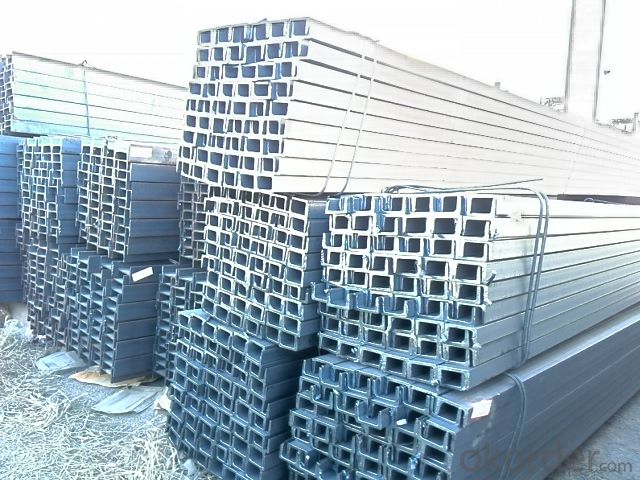
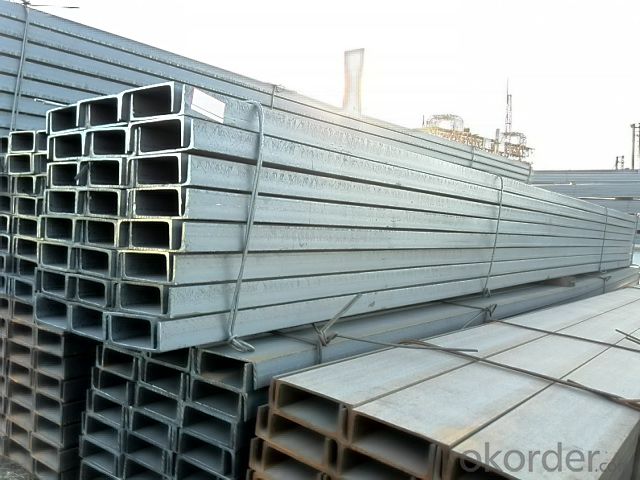
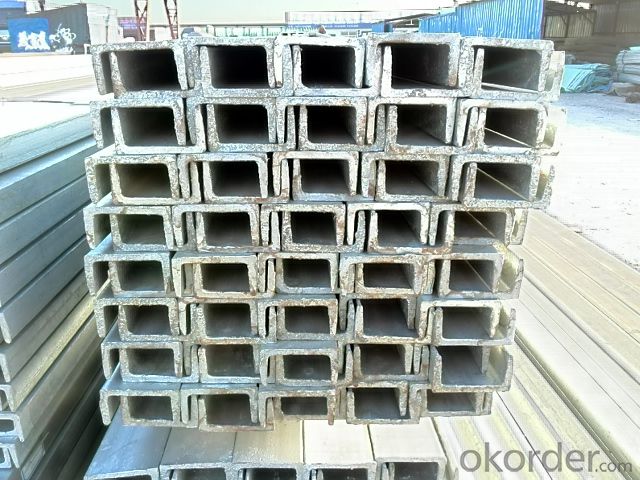
- Q: Are steel rebars suitable for use in structures with aggressive soil conditions?
- Yes, steel rebars are suitable for use in structures with aggressive soil conditions. Steel rebars have excellent strength and durability, making them resistant to the corrosive effects of aggressive soil. Additionally, rebars can be coated with protective materials or used in conjunction with other corrosion-resistant techniques to enhance their performance in such conditions.
- Q: What is the process of connecting steel rebars to structural members?
- To establish a secure and dependable connection, several steps are involved in connecting steel rebars to structural members. To begin with, the structural member's design specifications necessitate the precise positioning of the long, ridged or deformed steel bars called rebars. This is typically accomplished by using spacers or chairs to maintain the appropriate spacing between the rebars and the surrounding formwork. Following that, the rebars are connected to the structural member through various means. A common method is lap splicing, where the rebars overlap for a designated distance and are then tied together using wire or mechanical connectors. The length of the overlap is determined by engineering calculations to ensure adequate strength and load transfer. Another approach involves the use of pre-fabricated mechanical couplers, which provide a dependable connection between the rebars. These couplers are designed to securely grip the rebars and effectively transfer the load. They offer advantages such as quicker installation, reduced labor costs, and enhanced structural integrity. In addition to splicing, the rebars may also need to be anchored or hooked into the structural member. Anchoring involves extending the rebar's length beyond the connection point and bending it back into the concrete to create a hook shape. This provides additional resistance against pull-out forces. Throughout the process, it is crucial to ensure that the rebars are clean, free from rust, and properly aligned. Any contaminants or misalignments can weaken the connection and compromise the structural integrity. Therefore, comprehensive inspection and quality control measures are essential to ensure a successful connection. Overall, the process of connecting steel rebars to structural members requires meticulous planning, precise positioning, proper splicing or coupling, and thorough inspection. By following these steps, a robust and long-lasting connection can be achieved, guaranteeing the safety and stability of the structure.
- Q: What is the standard length of steel rebars?
- The length of steel rebars commonly differs according to the region and project specifications. In the United States, for instance, the standard length is typically 20 feet or 6.1 meters. Nevertheless, it is crucial to acknowledge that rebars can be tailored and adjusted to meet the required lengths for a specific construction project. Moreover, in certain countries or regions, rebars may come in various standard lengths as per local construction norms and regulations. Hence, it is imperative to refer to local codes and specifications for determining the appropriate standard length of steel rebars for a particular project.
- Q: Can steel rebars be used in structures with high resistance to earthquakes?
- Yes, steel rebars can be used in structures with high resistance to earthquakes. Steel rebars are commonly used in seismic-resistant structures due to their high tensile strength and ductility. They are able to absorb and dissipate the energy generated during an earthquake, providing reinforcement and stability to the structure. Additionally, modern construction techniques and design codes ensure that steel rebars are properly integrated into earthquake-resistant structures to enhance their overall resilience.
- Q: What is the maximum length of steel rebars that can be manufactured?
- The maximum length of steel rebars that can be manufactured depends on various factors such as the manufacturing process, transportation limitations, and practical considerations. However, in general, steel rebars can be manufactured up to lengths of around 60 feet or 18 meters.
- Q: Can steel rebars be used in pre-stressed or post-tensioned concrete structures?
- Yes, steel rebars can be used in both pre-stressed and post-tensioned concrete structures. In pre-stressed concrete, the rebars are tensioned before the concrete is poured, while in post-tensioned concrete, the rebars are tensioned after the concrete has hardened. The tensioned rebars help to improve the strength and durability of the concrete structures.
- Q: Can steel rebars be used in coastal construction?
- Yes, steel rebars can be used in coastal construction. Steel rebars are commonly used in construction projects, including in coastal areas where they provide crucial reinforcement to concrete structures. The steel rebars are typically coated or treated to prevent corrosion from the saltwater and other coastal elements, ensuring their durability and longevity in coastal environments.
- Q: How do steel rebars prevent cracks in concrete?
- Steel rebars prevent cracks in concrete by providing reinforcement and increasing the tensile strength of the concrete. Concrete is strong in compression but weak in tension, meaning it can withstand forces that squeeze or compress it, but is prone to cracking when subjected to tension or pulling forces. When steel rebars are embedded within the concrete, they act as a framework or skeleton, distributing the tensile forces throughout the structure. As a result, the rebars absorb the tension, preventing the concrete from cracking and failing under the applied load. The rebars also help to control the size and width of any cracks that may occur. By confining the cracks to a limited area around the rebars, they prevent the cracks from propagating and spreading throughout the entire concrete structure. Additionally, the presence of rebars can also help to prevent cracks from forming in the first place, as they reinforce the concrete and enhance its overall durability. In summary, steel rebars play a crucial role in preventing cracks in concrete by increasing its tensile strength, absorbing tension, and controlling the propagation of cracks. This reinforcement ensures the structural integrity and longevity of concrete structures, preventing potential failures and ensuring their safety.
- Q: Like a steel rebar and wire spiral, is the same? What's the difference?
- Generally, the thickness of the plane is about 1/30 of the span, and the value is more than 80. The higher the mark of commodity concrete, the higher the price, the different areas are, the average is about 350.
- Q: Can steel rebars be used in the construction of office buildings?
- Yes, steel rebars can be used in the construction of office buildings. Steel rebars are commonly used as reinforcement in concrete structures, including office buildings. They provide strength and stability to the concrete, making it more resistant to cracking and bending. The use of steel rebars helps to ensure the structural integrity of the building, especially in areas of high stress or load-bearing requirements. Additionally, steel rebars are durable and long-lasting, making them a reliable choice for construction projects.
Send your message to us
U-channels In Japanese Standard with High Quality
- Loading Port:
- Tianjin
- Payment Terms:
- TT OR LC
- Min Order Qty:
- 25 m.t.
- Supply Capability:
- 10000 m.t./month
OKorder Service Pledge
OKorder Financial Service
Similar products
Hot products
Hot Searches
Related keywords
